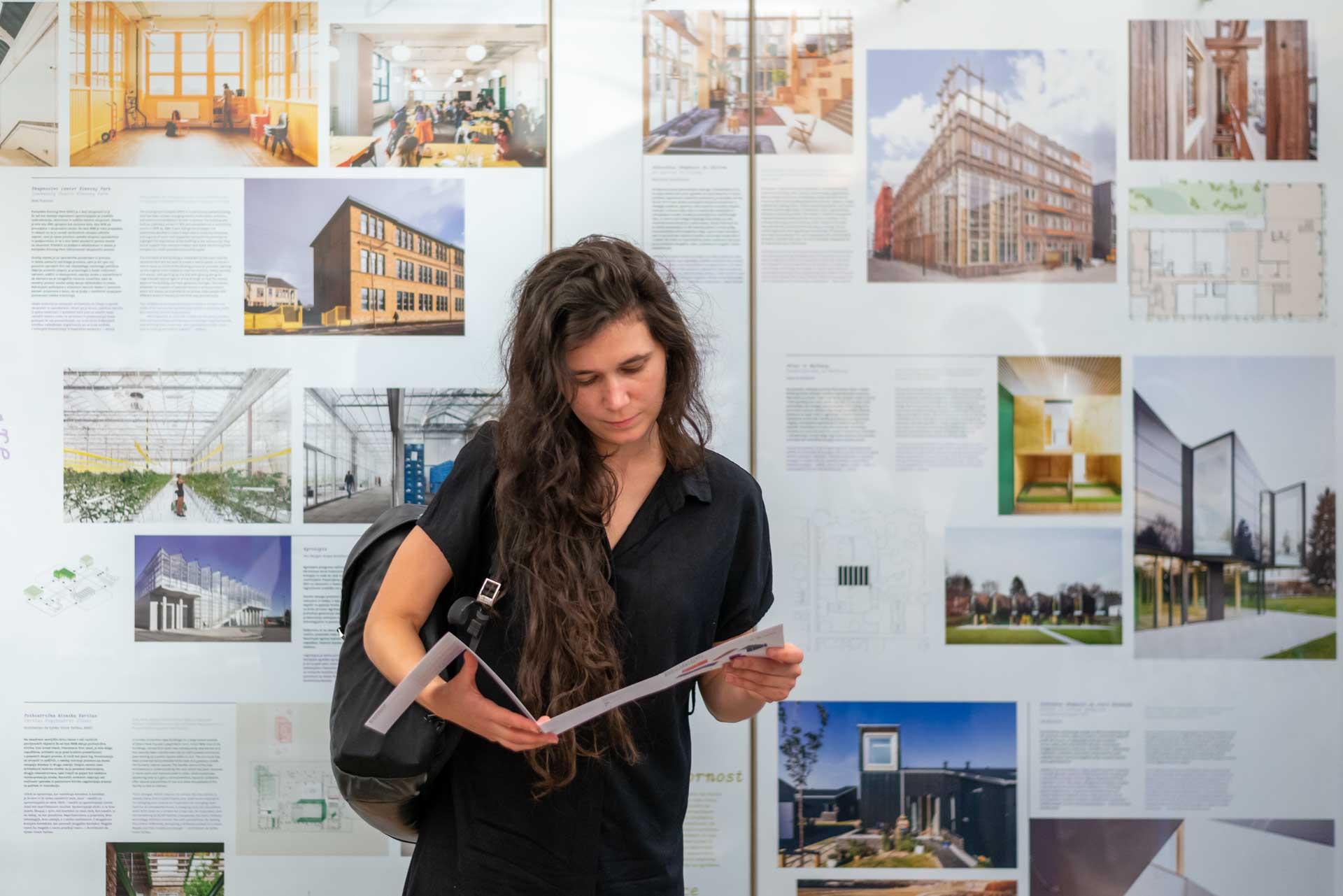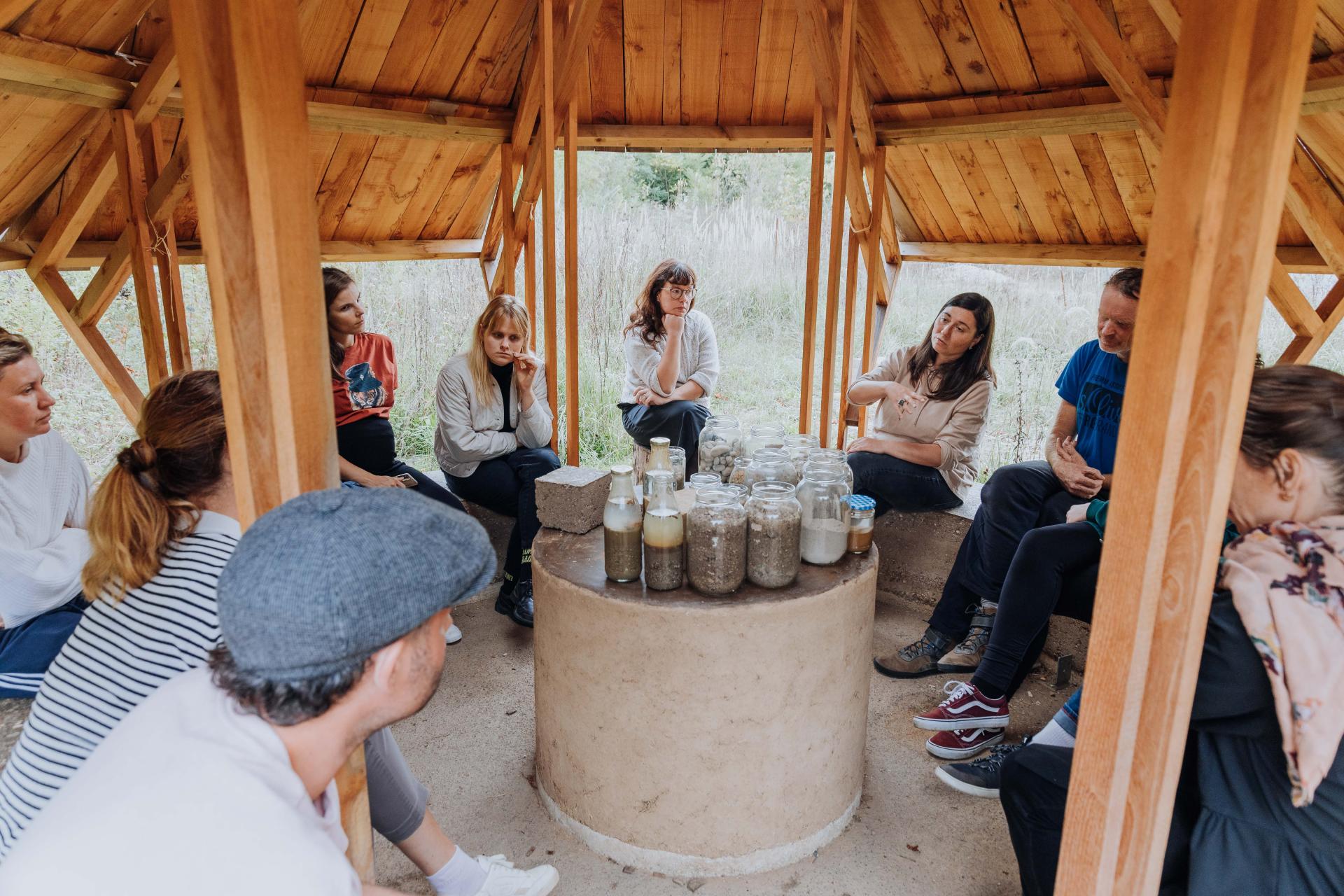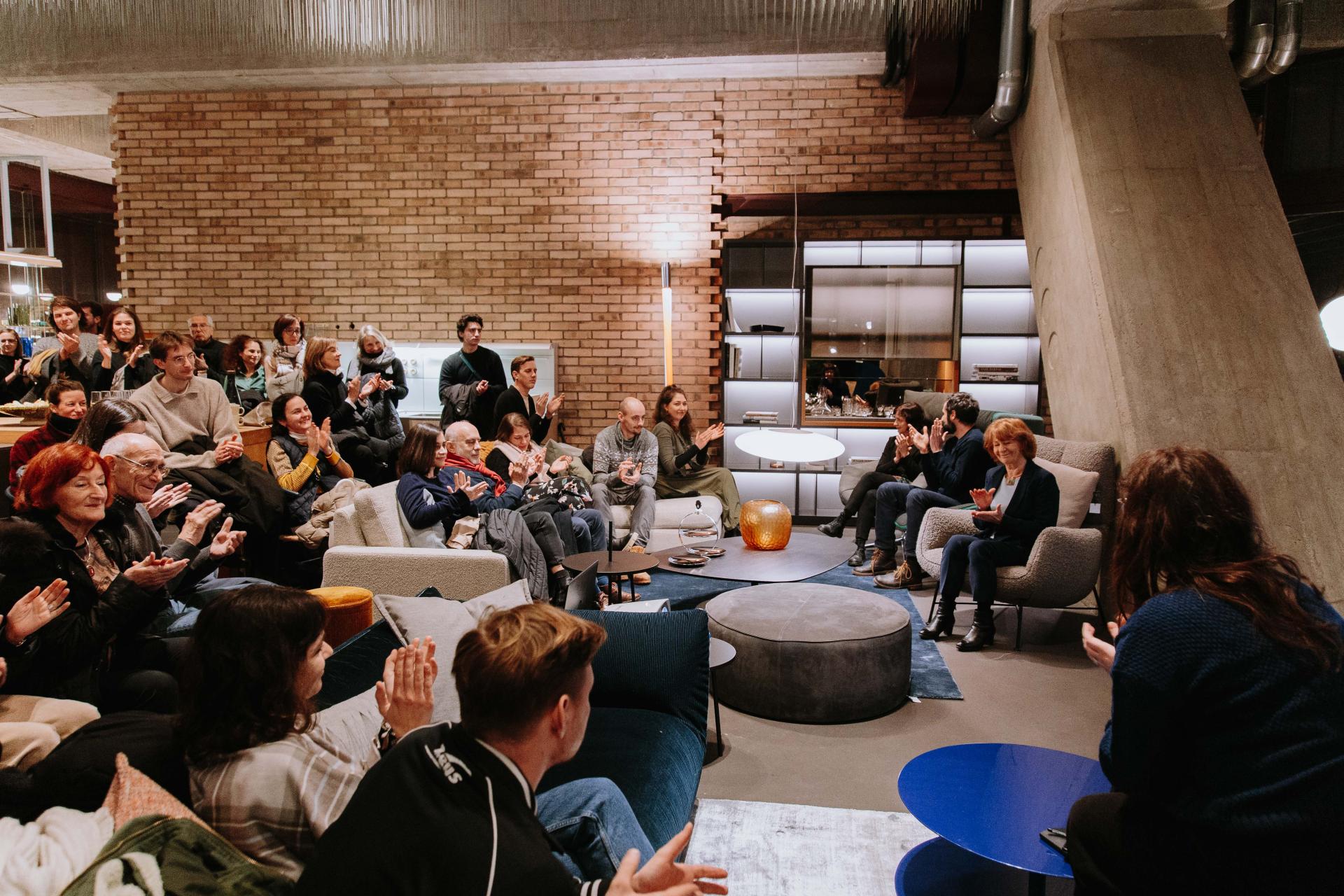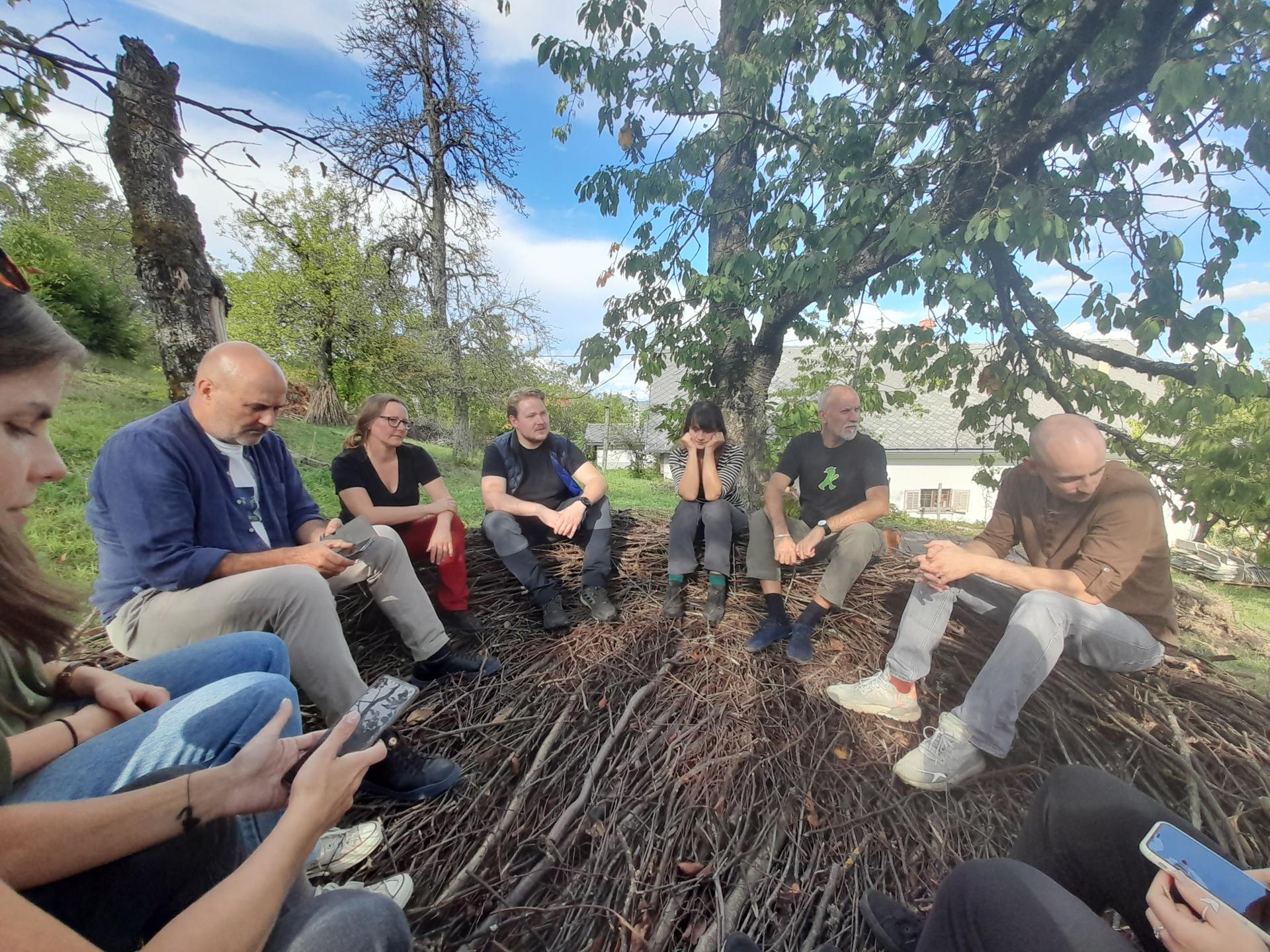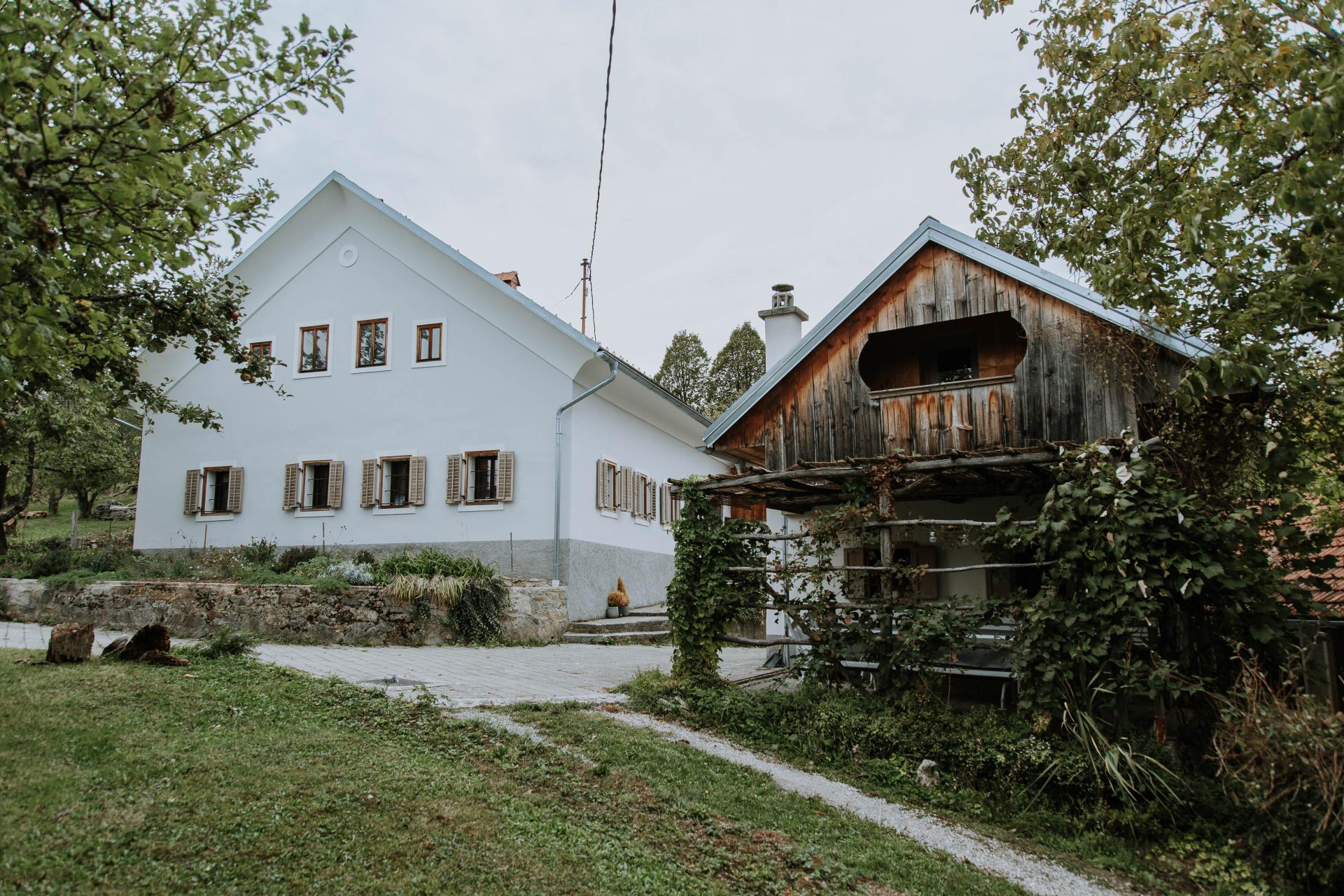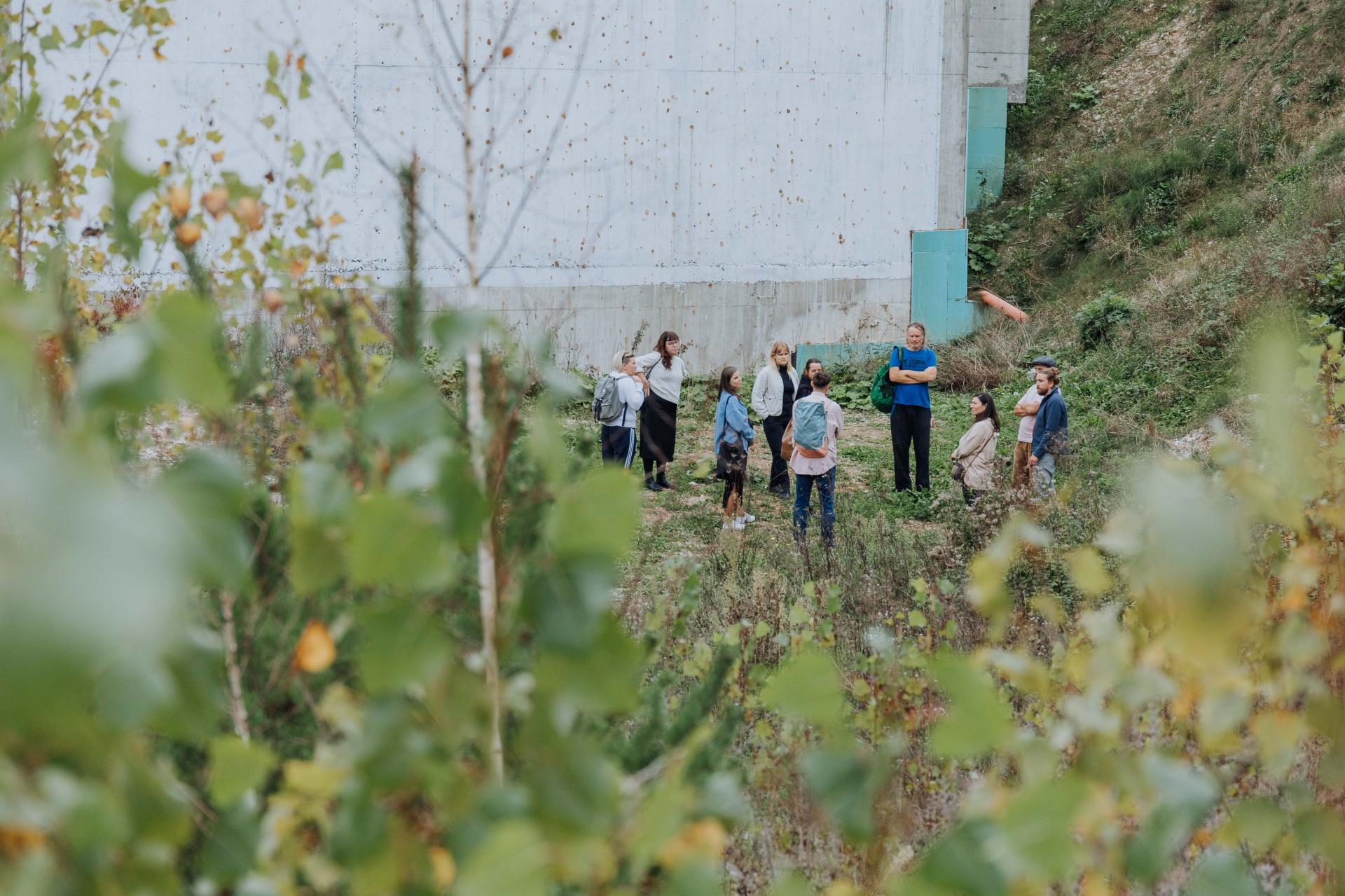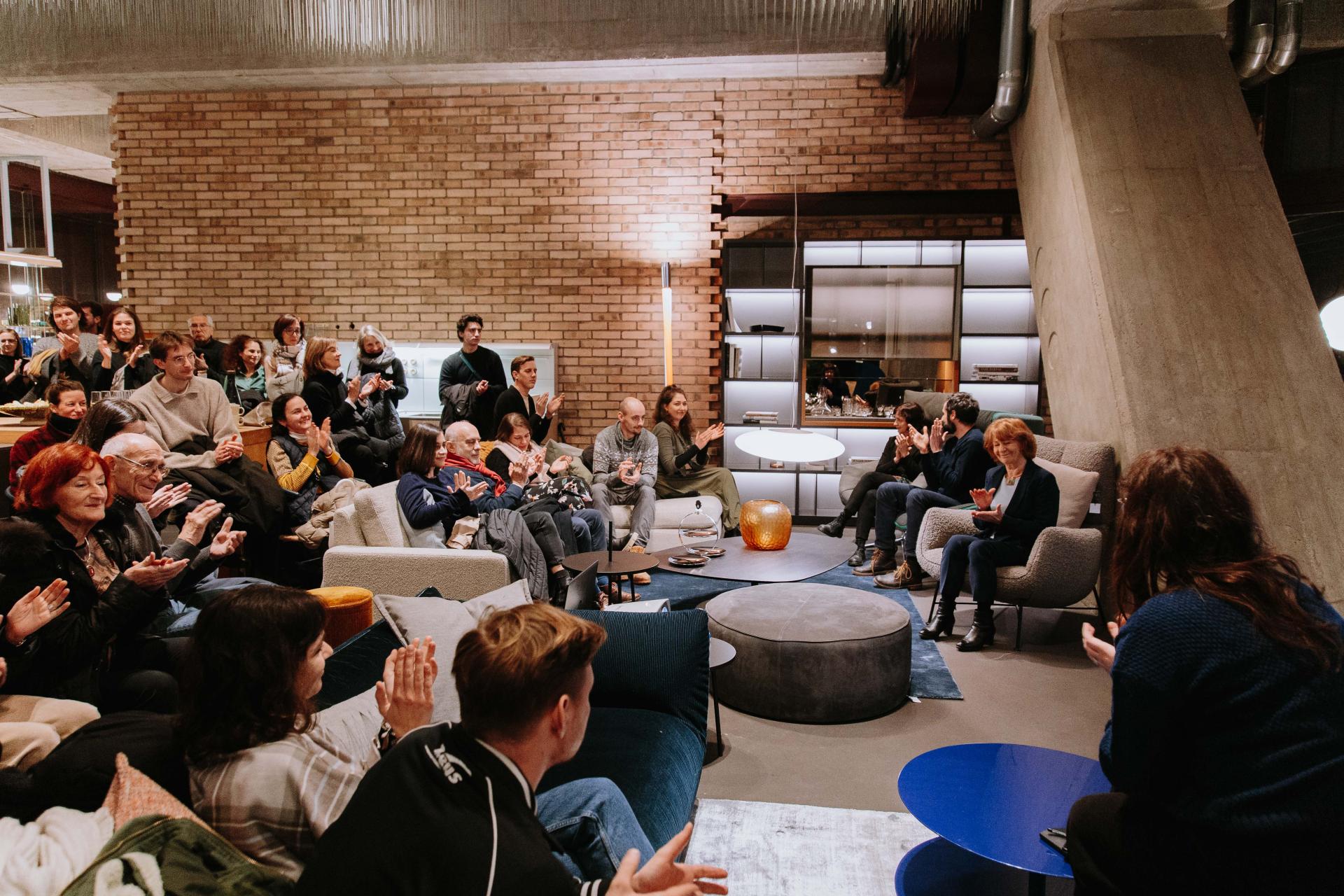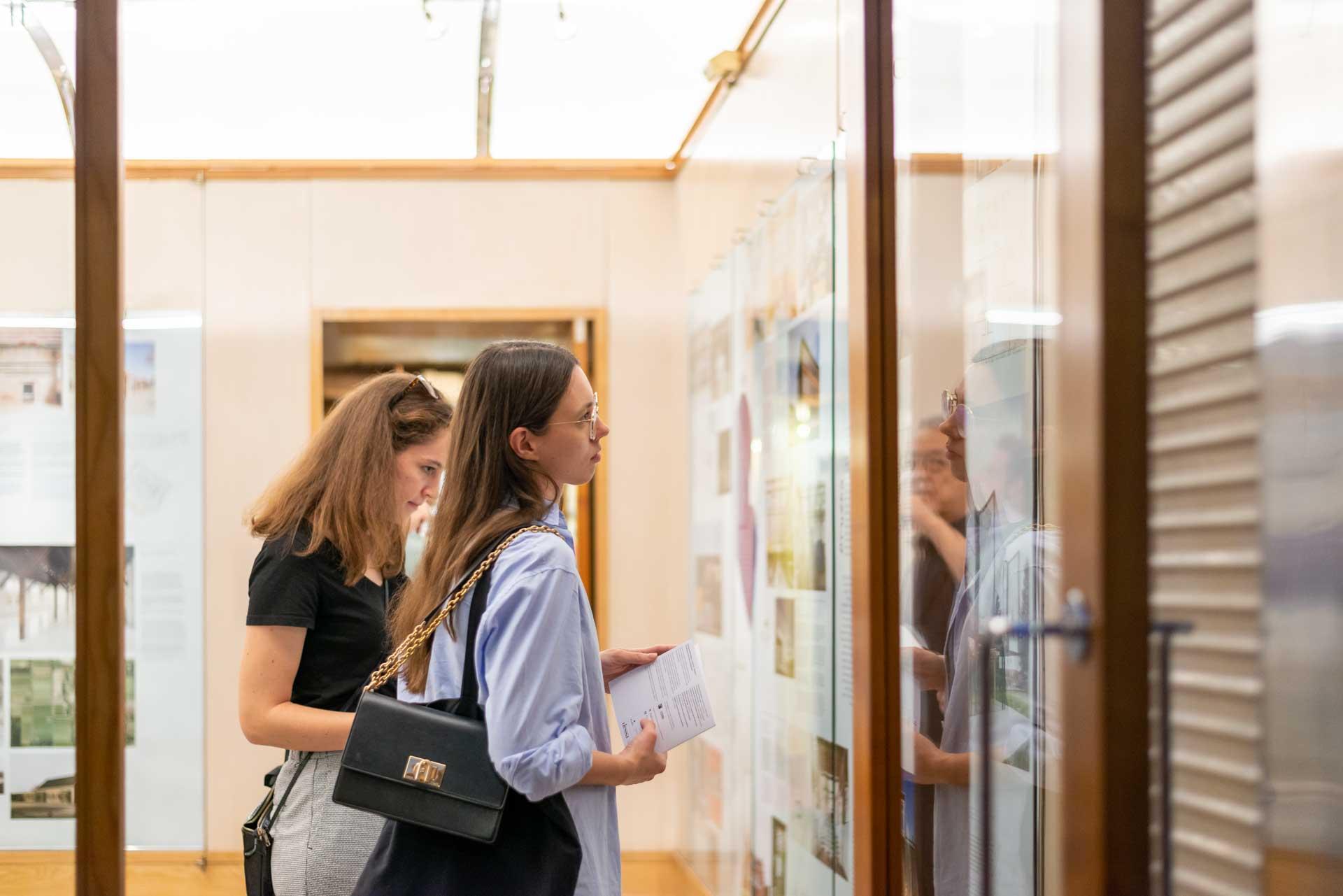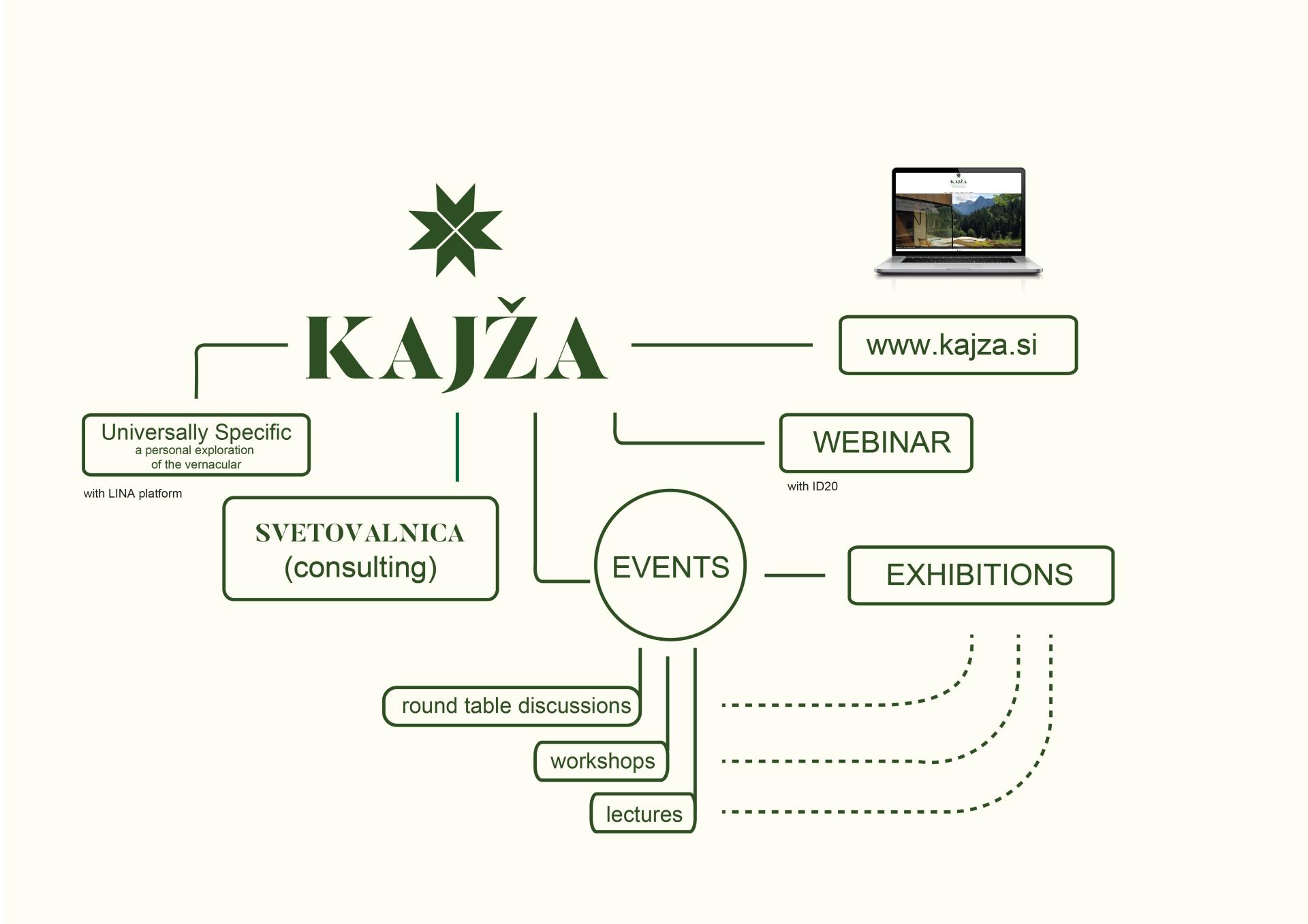Kajža
Basic information
Project Title
Kajža
Full project title
Kajža: Platform for renovation and sustainable living
Category
Regaining a sense of belonging
Project Description
Kajža was created as a platform for connection, education, knowledge exchange and support for people interested in or expertly working in the field of adaptive reuse, architectural renovation and sustainable building. It explores potentials for living in rural or remote environments today, as well as possibilities of adaptive reuse in cities. It presents quality projects from across Europe, offers one-on-one advice, produces online learning tools and live talks, workshops and discussions.
Geographical Scope
National
Project Region
Slovenia
Urban or rural issues
Mainly rural
Physical or other transformations
It refers to other types of transformations (soft investment)
EU Programme or fund
No
Description of the project
Summary
Kajža was established in 2021 as a non-governmental organization aimed at educating, providing comprehensive information about and communicating architectural renovation, adaptive reuse and sustainable building and living practices. It has two main target groups: professionals from the fields of heritage protection, architecture, spatial planning and policy making, as well as a broader public: individuals who either own an old building and are unsure about what to do with it, or those who are considering renovating an old building and recognize its potential. By connecting these audiences and sharing knowledge, values and know-how, Kajža aims at preserving and reusing old buildings, specifically those which are not commonly recognized or protected as heritage, revitalizing the countryside and enriching degraded urban areas, developing alternative models of cohabitation, ownership and investment, and implementing the guidelines and values of the New European Bauhaus at the most basic and practical level. The educational articles published on our website, a free webinar about renovation, numerous talks, exhibitions and workshops, as well as one-on-one consulting have proved to be a generator of a large community which believes in preserving and reusing old building fabric, cultural landscapes, and implementing sustainable living and building practices. Specific outcomes include several finished as well as ongoing consultancy cases, which result in tangible plans for the renovation of old buildings, and the increase of media coverage and public discourse connected to these important topics within contemporary architecture and spatial planning.
Key objectives for sustainability
'Kajža' means 'a small, rustic cabin' in Slovenian, and is often associated with limited resources, lack or old age. But Kajža is proud of these characteristics and encourages a reevaluation of today's spatial ideals, consumerism and extraction of resources. By adopting a de-growth philosophy to architecture, it opens exciting new ways of thinking about space and dwelling.
The reuse of old building fabric and/or building materials is one of the greenest and most sustainable options for the future development of our built environment. Kajža is entirely devoted to promoting and educating about these facts. By operating in a professional yet accessible register, it is capable of dispatching knowledge and values to a broad audience. It promotes the reuse of existing buildings and recycled as well as bio-based materials, which minimize the impact on our environment or are produced non-extractively. Natural building materials which have been used for millennia and vernacular building techniques can serve as a source of inspiration to contemporary designers and architects, and can be connected to cutting-edge technology to create an optimal and environmentally friendly result.
Operating as much in the realm of the cultural and societal as in the material, Kajža is very aware of the social aspects of sustainability. Our goal is to seek out and promote models of sustainable co-living, co-ownership and co-investment, which could provide an alternative to highly individualized existing structure of housing in Slovenia and across Europe. We aim to rekindle the immediate connection to cultural and natural landscapes and to built heritage, and offer tools for communities to become stakeholders in the preservation and development of their surroundings.
The reuse of old building fabric and/or building materials is one of the greenest and most sustainable options for the future development of our built environment. Kajža is entirely devoted to promoting and educating about these facts. By operating in a professional yet accessible register, it is capable of dispatching knowledge and values to a broad audience. It promotes the reuse of existing buildings and recycled as well as bio-based materials, which minimize the impact on our environment or are produced non-extractively. Natural building materials which have been used for millennia and vernacular building techniques can serve as a source of inspiration to contemporary designers and architects, and can be connected to cutting-edge technology to create an optimal and environmentally friendly result.
Operating as much in the realm of the cultural and societal as in the material, Kajža is very aware of the social aspects of sustainability. Our goal is to seek out and promote models of sustainable co-living, co-ownership and co-investment, which could provide an alternative to highly individualized existing structure of housing in Slovenia and across Europe. We aim to rekindle the immediate connection to cultural and natural landscapes and to built heritage, and offer tools for communities to become stakeholders in the preservation and development of their surroundings.
Key objectives for aesthetics and quality
Kajža offers several different modes of learning and engaging with topics of reuse, vernacular architecture, revitalization of the countryside and sustainable building. They are all carefully planned and offer a pleasant and comprehensive user experience. The overall design of Kajža is based on traditional woodcarving patterns from Slovenia and across Europe, which speak to a local and specific, but universal and easily transferable nature of the vernacular. This, in short, is Kajža’s philosophy as well.
On a broader scale, we at Kajža firmly believe that preserving existing buildings and/or building with local materials and in local communities is the best way to keep and develop regional aesthetic characteristics, preserve cultural landscapes and honor the genius loci. Vernacular architecture with its economic rationality and poetic beauty can offer an incredible resource of details and imageries to implement in new contexts and by using contemporary technologies. In this way, we can follow an aesthetic that is authentic and honest to its roots, but also to the historical fact of contemporaneity.
On a broader scale, we at Kajža firmly believe that preserving existing buildings and/or building with local materials and in local communities is the best way to keep and develop regional aesthetic characteristics, preserve cultural landscapes and honor the genius loci. Vernacular architecture with its economic rationality and poetic beauty can offer an incredible resource of details and imageries to implement in new contexts and by using contemporary technologies. In this way, we can follow an aesthetic that is authentic and honest to its roots, but also to the historical fact of contemporaneity.
Key objectives for inclusion
All of the content on our website, including currently almost two hundred educational articles, a two hour webinar we prepared together with another NGO, and other useful information, is free and openly accessible to everyone. There is no paywall and no charge for any of our existing content. All of our events, talks, workshops and exhibitions have been free of charge as well. They have been designed and implemented in a way that is inclusive and accessible. Part of the content of the events or exhibitions (such as audio recordings, abstracts etc.) is readily available on our website. One-on-one consulting is free for the first hour, and later available against a fee.
As mentioned in a previous compartment, social sustainability is one of our main fields of interest. We are interested in how adaptive reuse and collective natural building can impact and empower local communities and provide new valuable connections. We seek out existing models of cohabitation and local self-sufficiency in the countryside and develop new alternatives. We strongly believe that environmental and economical crises are deeply interconnected, and treat them as a complex whole.
As mentioned in a previous compartment, social sustainability is one of our main fields of interest. We are interested in how adaptive reuse and collective natural building can impact and empower local communities and provide new valuable connections. We seek out existing models of cohabitation and local self-sufficiency in the countryside and develop new alternatives. We strongly believe that environmental and economical crises are deeply interconnected, and treat them as a complex whole.
Results in relation to category
Through its channels and activities, e.g., the website, social media, workshops, events and consultancy, Kajža has reached over 100,000 people in Slovenia (and some abroad). Short term results include new interdisciplinary connections between professionals and new connections between heritage specialists and the public, developed idea plans for the reuse of four buildings and numerous answered questions, a free webinar on renovation, almost two hundred educational articles, two exhibitions, two workshops and media coverage of adaptive reuse and sustainable living in referential Slovenian media. Long term impacts will include the popularization of reuse and renovation in Slovenia, the rise of ‘baukultur’ and implementation of the values of New European Bauhaus in the local environment, a significant rise in the number of quality adaptations, a raised awareness of the importance of heritage preservation and use of sustainable materials, minimizing the amount of building waste, new models of social sustainability, and closing the developmental gap between urban and rural.
How Citizens benefit
In the last year, Kajža’s website has recorded almost 56.000 visits. Several hundred people decided to take our webinar and learn about the first steps of renovating an old building. Social media accounts and newsletter collectively reach about 4000 individuals. Our community is very important to us and we like to engage with them as much as possible. Each year, we launch an online survey asking people what they would like to keep and what they would like to change about the way Kajža works. In the first year, this directly impacted the implementation of more live events into our schedule. A more direct way of engaging with citizens is by one-on-one consulting. In the past year, we have provided consultation ranging from a single question to a several months long process of developing a renovation plan for about 25 people or families.
Physical or other transformations
It refers to other types of transformations (soft investment)
Innovative character
There are several organizations operating on different levels of formality who deal with cultural heritage in Slovenia. However, so far there has been no platform which could connect all of them, collect and record knowledge and offer a place of exchange. While the national body, the Institute for the Protection of Cultural Heritage, offers a central reference point for all dealing with built heritage, Kajža focuses also on those old buildings which have not been protected as heritage and might even seem valueless. The innovation is in the shift of perception – that even those structures with no apparent use or architectural value can prove to be an invaluable spatial or material resource and a treasure of vernacular building knowledge. In comparison to the national Institute, Kajža also has the agility and freshness connected with smaller NGOs: it can respond to situations faster and in a less indoctrinated manner, thus creating space for true innovation.
Kajža also operates on two levels: as a website, a small media, offering educational but also highly opinionated articles on the subjects of sustainability, heritage and adaptive reuse, and also as a platform to connect, organizing events, live talks, workshops and one-on-one consulting. This unique and specific organizational structure allows Kajža to address very distinct audiences and operate broadly as well as thoroughly.
Kajža also operates on two levels: as a website, a small media, offering educational but also highly opinionated articles on the subjects of sustainability, heritage and adaptive reuse, and also as a platform to connect, organizing events, live talks, workshops and one-on-one consulting. This unique and specific organizational structure allows Kajža to address very distinct audiences and operate broadly as well as thoroughly.
Disciplines/knowledge reflected
The core group of the project includes mainly architects. The project was founded and developed by Ajda Bračič, an architect, publicist, author and curator. However, during the course of the project, its development and growth, there have been individuals with backgrounds in several different professions involved, including but not limited to heritage protection, urban planning, landscape architecture, art history, sociology, ethnology, art, linguistics, project management, tourism, natural building and ecology. The constellation of Kajža’s group is changing from task to task, while the community around it keeps growing. These individuals interact and connect with each other and exchange knowledge in formal as well as informal settings.
Methodology used
Kajža was developed to offer useful advice regarding the care for old buildings, promote reuse and adaptation and explore alternatives to existing cohabitation and local self-sufficiency models. That is why it operates partly in the realm of media: it is very engaged with its audience and aims to publish about 1-2 new educational and promotional articles per week. With its content, it reacts to current goings-on in the professional field of Slovenian heritage and comments on good, as well as bad adaptations. One methodology is therefore to produce content that would amass a community interested in sharing their knowledge and know-how on renovation. Media hold tremendous power, and here their methodology is used to promote a worthy cause.
The second approach is focused on in-person gatherings and knowledge exchange. Kajža organizes and hosts live events and talks, workshops, lectures, debates etc., all with the intention of bringing similar-minded people into the same room. We recognize the power of physical vicinity, and often these gatherings sprout new projects and collaborations.
The second approach is focused on in-person gatherings and knowledge exchange. Kajža organizes and hosts live events and talks, workshops, lectures, debates etc., all with the intention of bringing similar-minded people into the same room. We recognize the power of physical vicinity, and often these gatherings sprout new projects and collaborations.
How stakeholders are engaged
Kajža occasionally collaborates with other NGOs, museums or galleries. The booklet 'Universally Specific' was produced with the help of Trienal de Arquitectura de Lisboa and LINA platform. The webinar on renovation was conceived and produced in collaboration with Zavod ID20, an NGO dealing with the cultural heritage of Idrija area in Slovenia. The first design workshop we hosted in September 2022 was partially produced by Slovenian Centre for Creativity and the Biennial of Design BIO. In 2023, our project “Material. Context. Society. Perspectives of Future Architecture” has been supported by Dessa architectural gallery and the Slovenian Ministry of Culture. In 2022 we collaborated with Ljubljana’s Museum of Architecture and Design (MAO) on the publication Supervernaculars!.
Global challenges
According to statistics, over 11 million homes lie empty across Europe and a significant percent of these are situated in buildings built before 1945. In spite of a growing renovation wave within the disciplines of architecture and spatial planning, the majority of these old homes are still not being repurposed or retrofitted, but are instead being demolished and replaced or even left to deteriorate on their own. Kajža is interested in how can renovation and adaptive reuse become agents of social empowerment and how can they not only benefit the cultural and ecological layers of the environment, but also aid in the flourishing of communities. Renovation and reuse are essentially actions of care and recognition and offer exciting new ways of entering and inciting relations with local societies, as well as a local model for a global change. By creating new definitions of peripheries and margins, empowering the countryside and non-hierarchical care of the land and buildings, the dualistic and divisive nature of today’s spatial development could be overcome.
Learning transferred to other parties
Kajža is a model which could be easily replicated and transferred to other places. The initial decision was to keep the website and platform strictly in Slovenian and to address specific Slovenian vernacular and self-built buildings, as well as cultural landscape. However, the same approach with slight changes in the content, depending on the specific cultural and architectural character of the area, could be implemented in any region or country across Europe, and perhaps even the world. In this day and age it is essential to promote adaptive reuse and renovation as much as possible, as well as encourage and empower owners and investors to consider keeping old structures instead of demolishing and building anew, thus wasting precious resources and creating building waste. That is why Kajža’s model would be useful everywhere, but would need to be adapted to specific legislation, traditional building techniques and cultural landscape of the area it operates in.
Keywords
vernacular architecture
adaptive reuse
sustainable living
revitalisation of the coutryside
knowledge exchange

